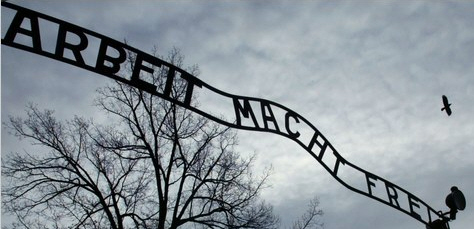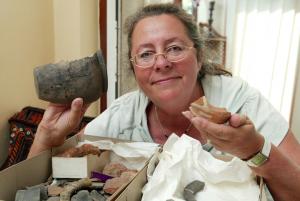In 2005, academics moved the skeleton of a Bronze Age man found in 1834 in a makeshift grave of a hollowed-out Yorkshire tree to the Division of Archaeological Sciences at Bradford University.
Their aim was to end 170 years of conjecture by carrying out tests on the gangly skeleton, including a CT scan on his skull courtesy of Bradford Royal Infirmary.
As he heads back to his original home at Scarborough's decadent Rotunda Museum, a few of Gristhorpe Man's secrets have been rumbled, and he’s even about to speak for the first time in 4,000 years.
"Investigations by a team of us at Bradford showed that he was in his early 60s, had lived in the area most of his life and had usually been in good health," says Dr Alan Ogden, a dentist and osteologist who credits the corpse with being "the best preserved 4,000-year-old skeleton in Britain."
"He was tall and muscular and had lived on a rich and carefully prepared diet. We presume, therefore, that he was part of a local ruling family. His death was relatively sudden, and was probably related to a brain tumour revealed by our examinations."
Ogden wasn't finished with the skull. He used it to build a facial reconstruction of the skeleton which he’s installed at the Rotunda, complete with "software techniques" to animate Gristhorpe Man's face as he speaks in English.
"He would actually have spoken a form of Proto-Celtic that we can only guess at," concedes Ogden.
"Unfortunately such a model bears only as much likeness to a living person as a formal passport photograph. But by this means I hope that visitors to the Museum can visualise him as a living man, a senior figure in his society, used to being obeyed and probably even revered."
Karen Snowden, Head of Collections for Scarborough Museums Trust, says organisers at the museum are "really excited" about their more expressive returning son.
"His skeleton, grave goods and coffin are one of the most important group of objects in Scarborough’s collections, and we have been working with Bradford University for a few years now to fully understand this unique man and his history," she reflects.
"The story is now made more real with the addition of his voice."
Open 10am – 5pm (closed Mondays). Admission £4.50/£4 (£9/£8 for free re-entry for a year, free for under-18s.)
Source:
Culture 24












